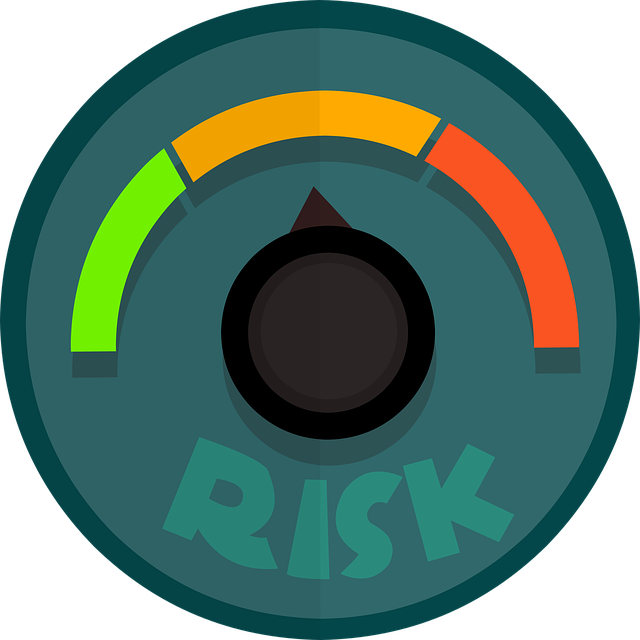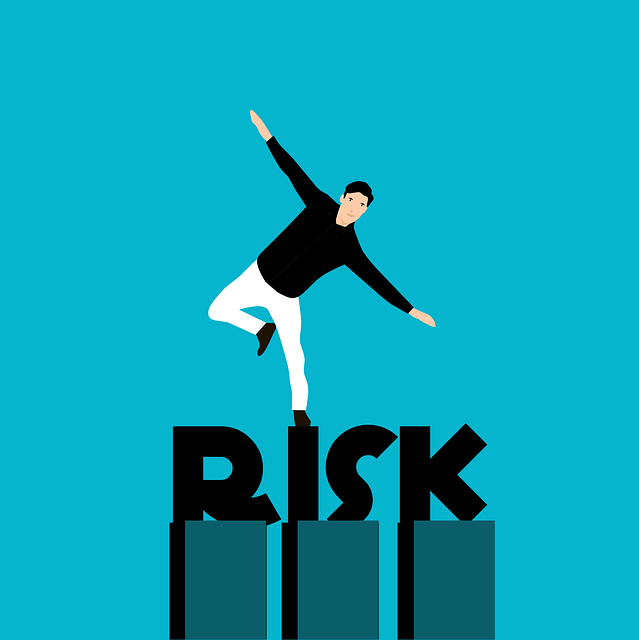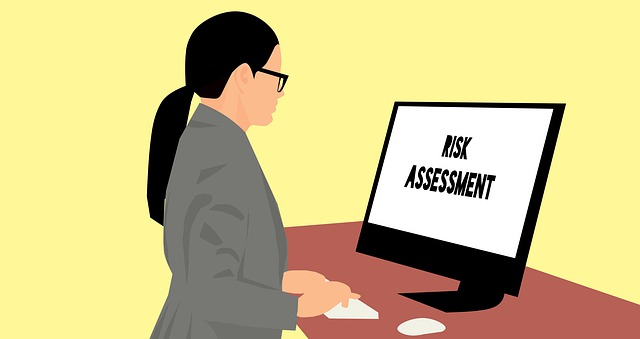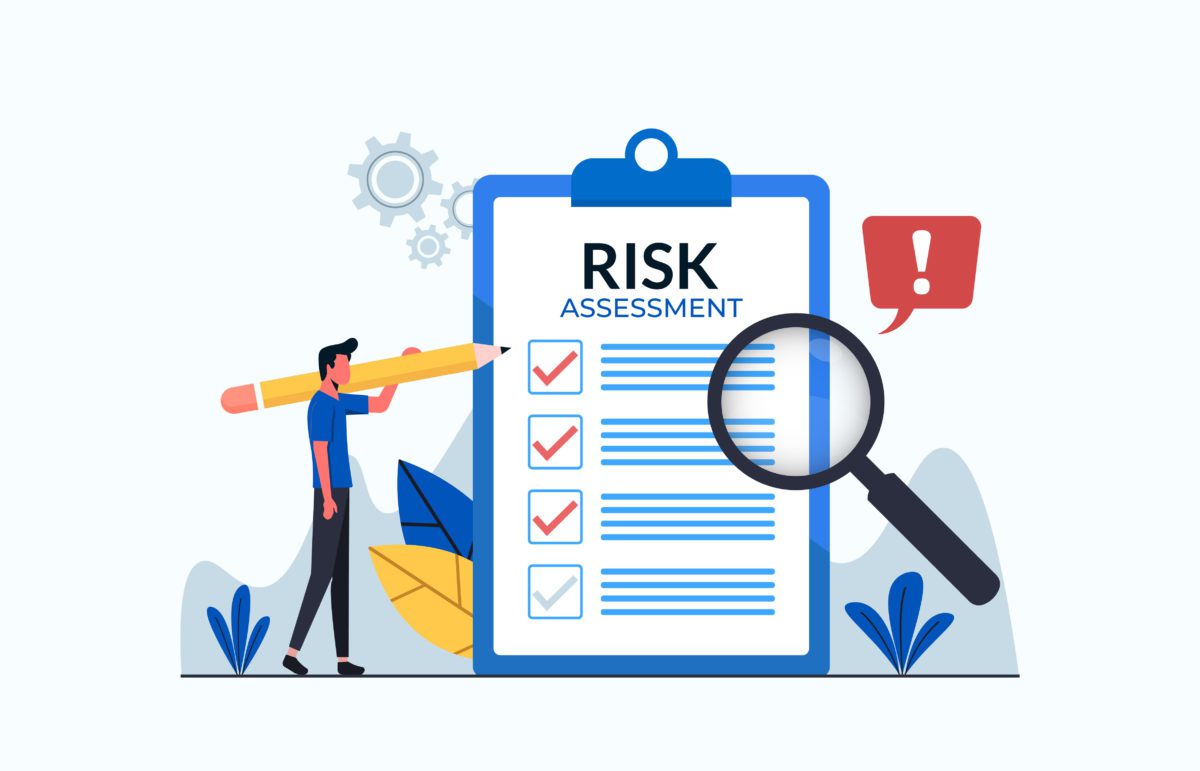Risk assessment is an essential process that helps us identify hazards, evaluate the likelihood of their occurrence, and assess their potential impact on people, property, and the environment.
Risk assessments are necessary for ensuring safety and minimising harm from various sources, including hazardous materials, dangerous activities, and natural disasters. In this article, we will delve into risk assessment details, its types, stages, importance, and when it should be carried out.

Understanding Risk Assessment
Risk assessment is an analytical tool used to quantify the risks associated with a particular activity, product, or system. It involves collecting and analysing data about potential hazards, assessing the likelihood and severity of their consequences, and identifying measures to mitigate or control them.
Effective risk assessment is a crucial aspect of risk management and are widely used in various industries such as construction, healthcare, manufacturing, transportation, and by health and safety professionals in the workplace. The process of risk assessment is discovery, identification, analysis, and mitigation.

Stages of Risk Assessment Process
Hazard Identification
Hazard identification is the first stage of the risk assessment process. It involves identifying potential sources of harm and the likelihood of their occurrence. Hazards can come from a variety of sources, including equipment, processes, materials, and people. By identifying a particular hazard, organisations can take steps to prevent or reduce the likelihood of harm occurring.
During this stage, it is important to consider all potential hazards, including those that may not be obvious. For example, a hazard may be present in the design of a product or in the way a process is carried out. By identifying hazards early on, organisations can take steps to address them before they become a problem.
Risk Estimation
Once hazards have been identified, the next step is to estimate the likelihood and potential consequences of those hazards. This involves using data and models to quantify the risks associated with each hazard itself. By estimating the risks, organisations can identify the most significant risks and prioritise risk management strategies.
Risk estimation involves considering a range of factors, including the frequency and severity of the hazard, the number of people who could be affected, and the potential impact on the environment. By taking a systematic approach to risk estimation, organisations can make informed decisions about how to manage risks effectively.
Risk Evaluation
After estimating the risks associated with each hazard, the next step is to evaluate the risks to which safety professionals determine whether they are acceptable. This involves considering the estimated likelihood and consequences of the identified hazards and comparing them to established risk criteria or standards.
Risk evaluation helps organisations determine whether the risks associated with an activity, product, or system are acceptable or whether additional measures are needed to mitigate them. If the risks are deemed unacceptable, organisations may need to revise their risk management strategies or implement additional measures to reduce the risks.
Risk Control and Mitigation
The final stage of the risk assessment process is risk control and mitigation. This involves identifying and implementing measures to reduce or eliminate the identified hazards. Risk control and mitigation are crucial as it ensures that the risks associated with an activity, product, or system are effectively managed.
There are several ways to control and mitigate risks, including engineering controls, administrative controls, and personal protective equipment. Engineering controls involve modifying equipment or processes to eliminate or reduce the hazard. Administrative controls involve changing the way work is done or providing training to reduce the risk. Personal protective equipment involves providing workers with protective gear to reduce their exposure to the hazard.
By implementing effective risk, control measures, and mitigation measures, organisations can ensure the safety of their workers, protect the environment, and prevent financial losses associated with accidents or incidents.

Types of Risk Assessments
There are various types of risk assessments, and each one is suited to different types of risks. In this article, we will discuss the three main types of risk assessments: Qualitative, Quantitative, and Semi-Quantitative.
Qualitative Risk Assessment
A qualitative risk assessment involves evaluating the likelihood and consequences of identified hazards based on expert judgment and experience rather than numerical data. This type of assessment is often used when there is limited data available to prioritize hazards, and the consequences of the hazards are not severe.
For example, a qualitative risk assessment may be used to evaluate the risks associated with a new product launch. The assessment may involve a full assessment team full of experts who evaluate the potential risks based on their knowledge and experience in the industry. They may consider factors such as the market demand for the product, the competition, and any regulatory requirements.
The experts may also consider the potential consequences of the risks, such as damage to the company’s reputation or financial losses. Based on their evaluation, they may recommend strategies to mitigate the risks and ensure the success of the product launch.
Quantitative Risk Assessment
A quantitative risk assessment involves using numerical data and mathematical models to assess the likelihood and consequences of identified hazards. This type of new risk assessment is often used when the consequences of the hazards are severe, and the data is available to support a more detailed analysis.
For example, a quantitative risk assessment may be used to evaluate the risks associated with a new manufacturing process. The assessment may involve collecting data on the process, such as the temperature, pressure, and flow rate. This data can then be used to create a mathematical model that simulates the process and predicts risk.
The model can be used to evaluate the risk arising from different scenarios and identify the most significant risks. The assessment may also involve calculating the costs associated with each risk and determining the best strategies to mitigate them.
Semi-Quantitative Risk Assessment
A semi-quantitative risk assessment involves using a combination of qualitative and quantitative methods to assess the likelihood and consequences of identified hazards. This type of assessment is often used when there is some data available, but a detailed quantitative risk analysis often is not feasible or necessary.
For example, a semi-quantitative risk assessment may be used to evaluate the risks associated with a new software application. The assessment may involve collecting data on the application’s features, such as its complexity and the number of users.
The assessment may also involve evaluating the potential consequences of the risks, such as loss of data or system downtime. The experts may then assign a numerical value to each risk based on its likelihood and consequences. This information can be used to prioritise the risks and develop strategies to mitigate them.
In conclusion, risk assessments are essential for organisations to identify and manage potential risks. By understanding the different types of risk assessments, organisations can choose the most appropriate method to evaluate their risks and develop effective strategies to mitigate them.

When to Conduct a Risk Assessment
Conducting a risk assessment is essential in ensuring the safety and success of any project, activity, or system. Here are some instances when a risk assessment should be carried out:
During Project Planning
During the planning stage of a project, it is crucial to identify potential hazards and risks that may arise during the project’s execution. Conducting a risk assessment at this stage helps to ensure that the necessary measures are in place to mitigate and control risk. It also helps to identify any gaps in the risk management plans and inform the necessary changes to prevent some risks from becoming a reality.
Before Implementing Changes
Implementing changes to an existing activity, product, or system can introduce significant new hazards or increased risks that need to be identified and addressed. Conducting a risk assessment before implementing any changes helps to identify potential new risks and inform the necessary changes to the risk management plans. This ensures that the changes are made in a way that minimises risk and maximises the chances of success.
After an Incident or Accident
When an incident or accident occurs, it is crucial to conduct a risk assessment to identify the root cause and prevent future occurrences. A thorough investigation helps to identify gaps in the risk management plans and inform the necessary changes to prevent similar incidents from happening again. This also helps to maintain the trust of all stakeholders involved and ensure the safety of employees and the public.
Periodic Reviews and Updates
Risk assessments should be reviewed periodically to ensure that the risk management plans remain effective and up to date. Changes in the environment, new hazards, or new regulations can impact the existing risk management plans.
Conducting periodic reviews helps to identify these changes and inform the necessary updates to the risk management plans. This ensures that the existing risk assessment and management plans remain effective as suitable and sufficient assessment measures.
Brightchecker offers new technology to help organisations digitise existing processes and ensure safe working practices are a top priority. We provide a free trial and have a risk assessment template available to ensure you have peace of mind your processes have been effectively risk assessed.
See more Helpful Content
Visit our Homepage

